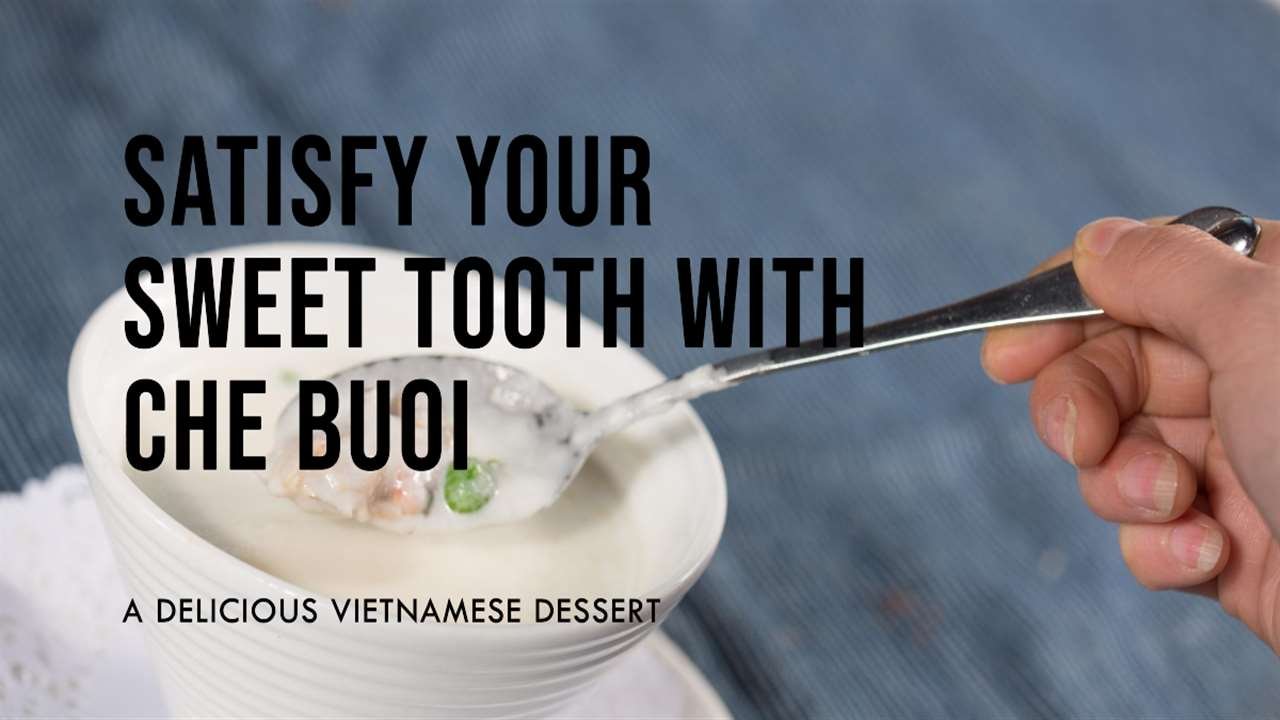Greetings, fellow food enthusiasts and seekers of culinary delight! If you’re in the mood for a sweet journey that encapsulates the rich flavors of Vietnamese cuisine, you’re in for a treat. In this article, we’ll unravel the secrets of the Che Buoi recipe—an exquisite dessert that harmonizes the natural sweetness of pomelo with the creaminess of coconut milk. Get ready to embark on a flavorful adventure that will transport you to the vibrant streets of Vietnam.
Unveiling the Essence of Che Buoi: A Sweet Symphony
Before we delve into the art of making Che Buoi, let’s take a moment to appreciate the essence of this delectable dessert. Che Buoi, at its core, is a sweet symphony that celebrates the unique combination of fresh pomelo and velvety coconut milk. It’s a culinary masterpiece that captures the essence of Vietnamese ingenuity in blending contrasting flavors into a harmonious dish.
The Cast of Characters: Ingredients for Che Buoi Bliss
1. Pomelo – The Star of the Show
Pomelo, with its large citrusy segments, serves as the star of the show in Che Buoi. Its natural sweetness and slightly tangy undertones add a refreshing twist to the dessert.
2. Coconut Milk – The Creamy Elixir
Coconut milk, the creamy elixir of many Vietnamese desserts, provides a luscious and indulgent base for Che Buoi. Its rich texture complements the pomelo, creating a velvety symphony in every spoonful.
3. Tapioca Pearls – The Chewy Delight
Tapioca pearls, a common element in Vietnamese desserts, bring a delightful chewiness to Che Buoi. They absorb the flavors of the coconut milk, adding textural complexity to the dish.
4. Sugar and Pandan Leaves – The Flavor Enhancers
Sugar, to taste, is added to sweeten the coconut milk, while pandan leaves infuse a subtle floral fragrance, elevating the overall flavor profile of Che Buoi.
Crafting the Che Buoi Masterpiece: A Step-by-Step Guide
Now, let’s embark on the journey of crafting your own Che Buoi masterpiece. Follow these simple steps to recreate the magic in your kitchen:
Step 1: Prepare the Pomelo
1.1 Peel the pomelo and carefully separate the segments, removing any seeds. 1.2 Cut the pomelo segments into bite-sized pieces. Set them aside for later.
Step 2: Cook the Tapioca Pearls
2.1 Soak the tapioca pearls in water for about 15 minutes. 2.2 Bring a pot of water to a boil and cook the soaked tapioca pearls until they become transparent. Drain and set aside.
Step 3: Infuse the Coconut Milk
3.1 In a separate pot, combine coconut milk, sugar to taste, and pandan leaves. 3.2 Heat the mixture over medium heat, stirring occasionally, until it comes to a gentle simmer. Allow the pandan leaves to infuse their flavor.
Step 4: Assemble Your Che Buoi
4.1 In serving bowls, layer the cooked tapioca pearls and pomelo pieces. 4.2 Pour the warm, infused coconut milk over the tapioca and pomelo. Allow the flavors to meld.
Step 5: Chill and Serve
5.1 Let your Che Buoi chill in the refrigerator for at least an hour. 5.2 Serve your chilled Che Buoi and savor the delightful combination of textures and flavors.
The Burst of Perplexity: A Flavorful Adventure
As you take the first spoonful of Che Buoi, be prepared for a burst of perplexity. The juicy sweetness of pomelo, the chewiness of tapioca pearls, and the velvety richness of coconut milk create a flavor adventure that dances on your taste buds. It’s a delightful journey through contrasting textures and harmonizing tastes—a true celebration of Vietnamese culinary finesse.
Why Choose Che Buoi?
1. Refreshing Citrus Notes
Che Buoi stands out for its refreshing citrus notes, courtesy of the pomelo. It provides a natural sweetness that is not overpowering, making it an ideal dessert for those who appreciate lighter, fruit-centric flavors.
2. Textural Complexity
The combination of chewy tapioca pearls and the creamy coconut milk adds textural complexity to Che Buoi. Each bite is a delightful play between smooth and chewy, creating a satisfying mouthfeel.
3. Simplicity in Ingredients
With just a handful of simple and readily available ingredients, Che Buoi exemplifies the beauty of Vietnamese desserts. It’s a testament to how simplicity can result in culinary brilliance.
FAQs: Answering Your Che Buoi Curiosities
Q1: Can I use other citrus fruits instead of pomelo?
Absolutely! While pomelo is traditional, you can experiment with other citrus fruits like grapefruit or orange to add your own twist to the recipe.
Q2: Are there variations of Che Buoi in different regions of Vietnam?
Yes, indeed! Different regions may have their own variations of Che Buoi, incorporating local fruits or alternative ingredients to suit regional preferences.
Q3: Can I use coconut cream instead of coconut milk?
Certainly! Coconut cream will add an even richer and creamier texture to your Che Buoi. Adjust the quantity according to your preference.
Q4: Is Che Buoi served warm or cold?
Che Buoi is traditionally served cold, making it a refreshing and comforting dessert, especially in warm weather.
Q5: Can I make Che Buoi ahead of time?
Absolutely! In fact, Che Buoi benefits from some time in the refrigerator, allowing the flavors to meld. Prepare it ahead of your gathering for a stress-free dessert option.
In Conclusion: Che Buoi Recipe
In conclusion, Che Buoi is not just a dessert; it’s a symphony of flavors that encapsulates the essence of Vietnamese culinary artistry. From the refreshing citrus notes of pomelo to the textural complexity of tapioca pearls, each element plays a crucial role in creating a culinary masterpiece. So, gather your ingredients, immerse yourself in the simple joy of cooking, and savor the delightful magic of Che Buoi. Happy cooking!
For more ideas, recipes, and cooking tips and tricks, please visit us at Massa Branch Burg.

